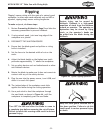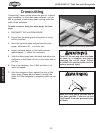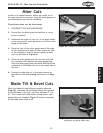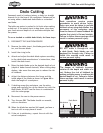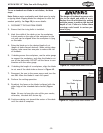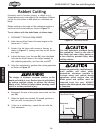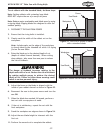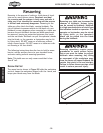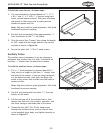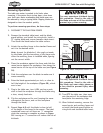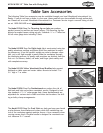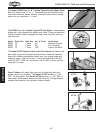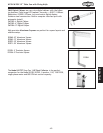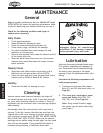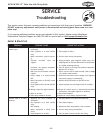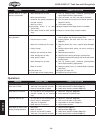
-39-
W1761/W1762 12" Table Saw with Riving Knife
OPERATIONS
To build the resaw barrier, do these steps:
1. Cut two hardwood or plywood boards to
3
⁄4" x 7
1
⁄2"
x 40
1
⁄4" and
3
⁄4" x 3" x 40
1
⁄4". If you are using hard-
wood, cut the boards oversize, then joint and plane
the boards to the correct size to make sure the
boards are square and flat.
Note: Only use furniture grade plywood or kiln dried
hardwood to prevent warping.
2. Pre-drill and countersink 8 holes approximately
3
⁄8"
from the bottom of the 7
1
⁄2" tall board.
3. Glue the end of the 3" board, then clamp the boards
at a 90° angle with the larger board in the vertical
position as shown in
Figure 56.
4. Secure the joint with
1
⁄4-20 x 2" wood screws.
Auxiliary Fence
The auxiliary fence is necessary if you are resawing a
workpiece that is taller than it is wide. It should be no
less than
1
⁄2" shorter than the board to be resawn.
To build the auxiliary fence, do these steps:
1. Cut a
3
⁄4" thick hardwood or plywood board 40
1
⁄4"
long, and cut a
height no less than
1
⁄2" shorter than
the board to be resawn.
If you are using hardwood,
cut the board oversize, then joint and plane the
board to the correct size to make sure the board is
square and flat.
Note: Only use furniture grade plywood or kiln dried
hardwood to prevent warping.
2. Pre-drill and countersink four holes 1
1
⁄4" from the
bottom of the
board.
3. Pull the end cap off of the standard fence, then
remove four hex nuts, flat washers, hex bolts, and
the fence facing on the blade side of the fence.
4. Thread the four M8-1.25 x 25 flat head screws
through the auxiliary fence and into the hex nuts
in the standard fence body, and tighten securely as
shown in
Figure 57.
Figure 56. Clamping the resawing barrier.
Figure 57. Auxiliary fence.



